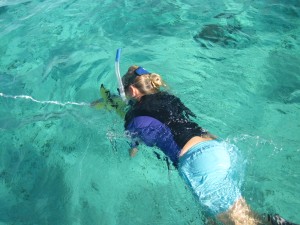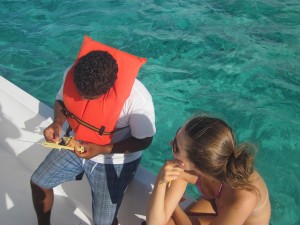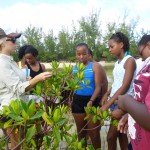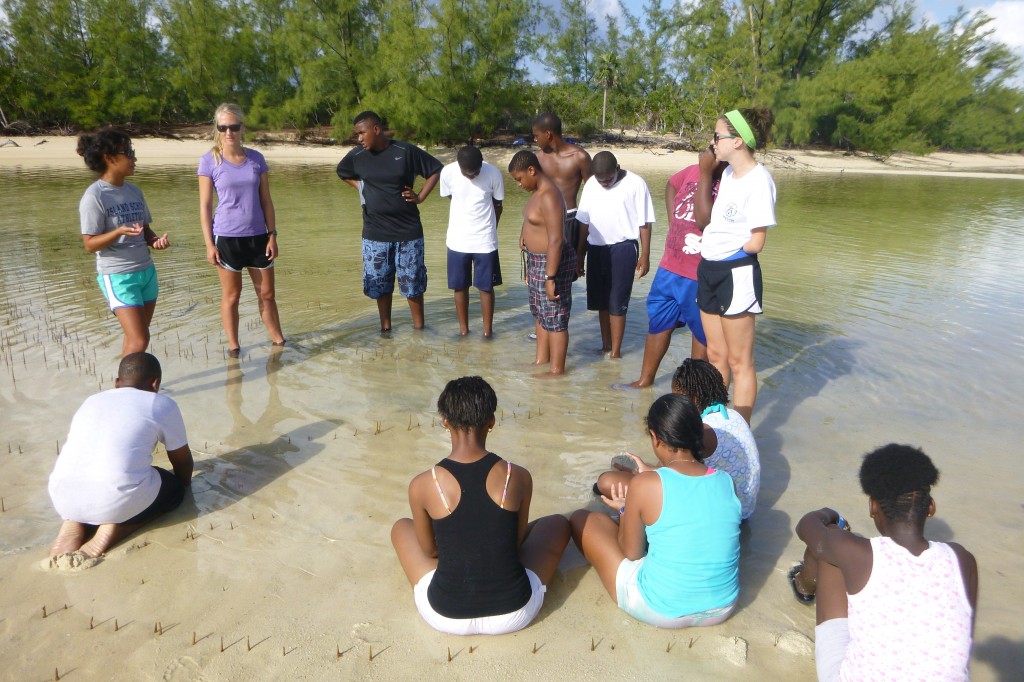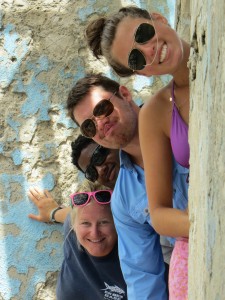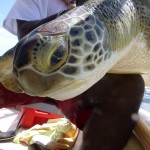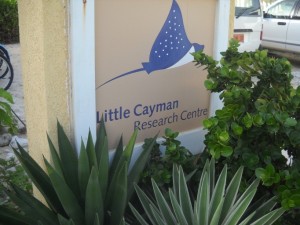 Dr. Bill Louda (PI) and Aaron Schultz, a co-PI and director of the Cape Eleuthera Institute, visited 3 marine laboratory facilities between August 13-18, 2013. The major part of this trip was a visit (Aug. 13-16) to the Central Caribbean Marine Institute (CCMI) on the Island of Little Cayman just south of Cuba. Following their return to Miami Florida, they then visited two labs in the Florida Keys (post to follow).
Dr. Bill Louda (PI) and Aaron Schultz, a co-PI and director of the Cape Eleuthera Institute, visited 3 marine laboratory facilities between August 13-18, 2013. The major part of this trip was a visit (Aug. 13-16) to the Central Caribbean Marine Institute (CCMI) on the Island of Little Cayman just south of Cuba. Following their return to Miami Florida, they then visited two labs in the Florida Keys (post to follow).
CCMI (LCRC) is built very close to the shore line on the northern side of Little Cayman. The outer reef (~ 150 – 175 yards offshore) rising out of hundreds of fathoms of water was effective in decreasing hurricane storm surge several times and it is predicted that future storms, without the influence of sea-level rise, will only push saltwater up under these structures and not into the first floor level.

The lab area occupies about one-third of the first floor of the yellow building. The rectangular 1/3 of that floor is itself divided into 3 separate labs, each about 10 x 20 feet (this is from memory, not measurements). In this way, wall and bench linear footage (space) is maximized and lab functions are segregated. This concept should roll into the plans for laboratory upgrades / building at CEI.
Thanks to Dr. Carrie Manfrino, CCMI President and Director of Research for coordinating the visit. Continue reading
